Brevis...
Price $10,795
Likes: ultra accuracy, big power
Dislikes: amp heft requires two people
by John Gatski
I have been reviewing Bryston amps since the 1990s. One of my favorites has always been the big 14B-SSTII model, a dual-mono stereo, single-chassis version of the Bryston 7B monoblocks. I was so impressed by the amp’s sonic neutrality that I purchased the review sample of the 14B-SSTII in 2003 and have faithfully used it for almost every speaker review I have done, plus hours of listening for ultra hi-res playback. It is that good.
With the Bryston, I never had to worry about its pairing with any speakers, and having the big B in the system meant no amp coloration. I could focus on the other components and enjoy the utmost detail of hi-res music playback. So my 14B-SSTII has been in constant use all the years, and I never really thought about replacing it.
But along comes the new Bryston 14B3 Cubed Series, reviewed here. About the same power, and although I did not think that Bryston could improve on the sonic character, by golly, it does sound a bit fresher, a tick up in stereo imaging and ease of listening.
Features
Priced at $10,795 retail, the Bryston 14B3 dual-channel (stereo) amplifier, the stereo flagship of the new Cubed Series, is basically two 7B3’s, which have been combined in a dual-mono modular design and has the power to drive any speaker from modest towers to "impossible" loads of exotic loudspeakers; the powerful stereo amp is rated at 600 watts into 8Ω; a whopping 900 watts into 4Ω. Distortion is less than .05 percent along its power bandwidth, which extends to 100 kHz.
The new 14B3 has got the power slam, but relays an increased sense of detail refinement, smoothness, imaging and upper-end air over the SSTII series. It sounds fresher, more concise than the old amp.
As you would expect, damping factor is impressive: greater than 300 at 20Hz (8Ω), and signal to noise is -120 dB with balanced input. This amp is made for real hi-res music. According to Bryston, the Cube amp line embodies the “first to last watt” philosophy. A significant part of the design criteria for the new Cubed amplifiers was to develop amplifiers that would maintain an ideal power curve through the “first and last watt” including noise floor and distortion.
All watts matter
According to Bryston’s white paper on the new amps, “most amplifiers exhibit a power curve whereby the best noise floor, drive capability and distortion are maintained from about 1/3 power and up. The new Bryston Cubed series maintain their ideal power curve right from the first watt to the last watt. Think of it like a torque curve in a car. The sweet spot or the torque curve has been expanded.”
Bryston says that achieving this “first-to-last-watt” fidelity and clarity is the result of multiple design approaches. First is the elimination of low-level crossover, or zero-crossing, artifacts. According to Bryston, most Class AB amplifiers have sufficient bias to prevent primary crossover distortion, but another type of crossover artifact, “secondary crossover distortion,” is the result of insufficient speed in the driver transistors.
 |
| Dig those massive power transformers |
Bryston utilizes fast drivers to prevent the secondary crossover distortion, but more important is Bryston's proprietary Quad Complementary Output design, which is said “to vastly reduce the capacitance seen by the driver transistors, virtually eliminating storage delay in the output stage that could contribute to nonlinearities in the zero-crossing region.”
Another key improvement in the Cubed Series is Bryston's continuing effort to reduce low-level noise. The clarity of Bryston's design is enhanced at low-listening levels by pushing the noise floor far below the signal level, improving the “silence between the notes” and enhancing the clarity of the music at low power levels.
Finally, Bryston has focused on reducing distortion at all levels, especially at high frequencies. Bryston amplifiers show remarkably 'flat' THD-with-frequency curves, showing almost no tendency to increase distortion as frequency rises. This has the effect of reducing overall “haze,” helping to pull the quietest passages out of the background.
Bryston VP James Tanner also noted other contributors to the 14B3’s low-level audio clarity, including power-supply design which improves the placement-in-space and focus of the sonic “image.” “We think the overall result is an unprecedented degree of clarity and freedom from artificiality,” Tanner said, “especially noticeable at lower levels — in comparison with other designs, but continuing to even the highest outputs.”
The B3 Cubed Series also includes several other amps including the 135wpc 2.5B3, the 300wpc 4B3, previously mentioned 7B3 monoblocks, the 1,000wpc 28B3 and various models in Bryston’s professional range. They are all made in the Bryston factory in Canada. And yes, they still have that 20 year warranty.
Make the connection
As an amplifier, the 14B3’s rear panel is simply laid out. Balanced XLR and single-ended RCA jack connections, speaker binding posts, remote operation connection and two-stage gain switch, 23 dB or 29 dB, input selector switch, remote power connection, main power switch and a status light. The 14B3 pro version also has rotary attenuators. For easier movement, the rear also has rack handles.
 |
| All the connections a stereo amp needs |
The new Cubed series have also been redesigned aesthetically with a modern look that is not as rectangular looking as the old series. The left and right side rounded indentations give it a slicker look with the rack handles overlaying each side. The 14B3 comes in black and silver finishes. They can also be ordered with a 17-inch or 19-inch faceplate configuration. As you would expect for a massive power stereo Class A/B amp, it is quite heavy: about 90 pounds. In lifting and moving the new amp, it seemed a bit heavier than the old 14B-SSTII.
The set up
I paired up the Bryston 14B3 with a variety of speakers including a pair of Pass Labs Tower SR-2s. Westlake Tower 5s (review upcoming) and two MartinLogan models: the new Impression and my Montis.
The playback system included Oppo BDP-205 universal player, Benchmark DAC-3 HGC, a Mytek Brooklyn DAC, Clear Audio Emotion turntable/Benz MC cartridge, Rogue Audio RP-5 all-tube preamplifier (for the phono stage), and my tried and true CODA line preamp. Other amps on hand included Pass Labs X350.8, the Bryston 14B-SSTII and a Rogue Audio Medusas Class D/tube amp.
All interconnects were done with the Wireworld Eclipse line of analog, digital, USB and speaker cables. Power was routed through the Essential Sound Products Essence Reference II power cords and power strip.
The audition
First up were some of my favorite jazz tracks in hi-res, played through the MartinLogan Montis. Since the Montis have their own powered woofers, I was mainly listening for the air, detail smoothness and music realism conveyance via the hi-res tracks.
On the Warren Bernhardt — So Real SACD, as played on the Oppo BDP-205 with its new ESS Sabre DAC Pro chip, I immediately heard an immense soundfield with the jazz piano, drums and bass. Great clarity of the upper-register Steinway piano notes and cymbal brushes. What I didn’t hear was amp coloration; my favorite Bryston attribute is its sonic neutrality. There is no amp flavor at all. The MLs and upstream components all worked together to give that openness and studio dynamic that I hear in real music. The 14B3 just relayed it.
Switching over to the older 14B that neutral character was still there, but the new amp revealed a bit more refined smoothness. The older amp seems a smidgen sharper in the high midrange when playing at low levels. Maybe because it is 14 years old, it needs a refresh, but I definitely preferred the 14B3 to the SST-II.
On the 2006 Telarc SuperBass Recorded Live At Scullers, Ray Brown Christian McBride and John Clayton, the Pass speakers' bottom end got a big work out with the three maestro class bassists digging deep. Immersive, chunky full, room filling bass, without a subwoofer, that the Bryston kept in check with extended bottom end.
I listened to another dozen or so SACDs and hi-res downloads, and my conclusion pretty much held up through all the MartinLogan listening. The amp gets out of the way and allows those magic electrostatic panels to shine.
Moving on to the Pass SR-2s with 12-inch woofers, I could now test the bass caliber of the 14B3. Listening to the Flim And The BB’s — Tricycle SACD, another DMP recording of yore, the kick drum slam was fast, tight — with no slow bloom in the midbass. Ditto with several organ recordings that were made with pipe organs with huge bass pipes, down into the low 20 Hz range. The speakers could not quite get that low, but down to 28 Hz, the Towers relayed out a very tight organ bottom end.
On the 2006 Telarc SuperBass Recorded Live At Scullers, Ray Brown Christian McBride and John Clayton, the Pass speakers' bottom end got a big work out with the three maestro class bassists digging deep. Immersive, chunky full, room filling bass, without a subwoofer, that the Bryston kept in check with extended bottom end. Wow! Did this recording kick ass.
On the new Westlake Tower 5s, the Bryston was a total complement to the Westlake’s accurate voice response. The 5-inch woofers don’t deliver the thunderous low end of a subwoofer, but there is plenty of bass for most music and the speakers’ lack of midrange and low treble coloration made listening sessions a pleasure through a great amp.
If you are looking for amplifier honesty and the ability to drive any speaker in the largest of rooms, or just like the power reserve on hand in your modest listening area, the 14B3 is one to consider.
Case in point was the Tsuyoshi Yamamoto Trio – Midnight Sugar SACD (Three Blind Mice) with a juicy upright bass, piano and drums. On some amp/speaker combos, the high-register piano amplitude can be hard on the ears when played loudly, but the Westlake/Bryston tandem delivered the loud notes without me reaching for the volume. Well done.
On classical music, I really enjoyed a recently discovered SACD: The two Sergei Prokofiev Concertos as played by Arabella Steinbacker, accompanied by the Russian National Orchestra. This 2012 violin/orchestra performance is not only beautifully played but the rich, harmonics-filled tone of the vintage Stradivarius is amazingly life like. And the Bryston delivered it that way, without any stridency in the violin reproduction.
Rocking the Bryston
I played a dozen or so pop recordings including the Michael Jackson — Thriller SACD, Daft Punk — Random Access Memories HD Tracks hi-res download, and the remix/remaster of the 50th Anniversary Beatles — Sgt. Pepper’s Lonely Hearts Club Band LP, played on a VPI Player Turntable with a dandy MC cartridge from HANA.
As with any other genre that I played through the Bryston, the 14B3 handled it all without a fuss. MJ’s "Bille Jean" bass lines and kick drum really showcased the amps ultra-quick bass extension. The Sgt. Pepper remix is highlighted by a much better stereo image with proper instrument balance and air. The 14B3 rendered such tracks as “Day In the Life” and “Lovely Rita” with a perfect blend of vocal and instrument layers that revealed what an expert remix and remaster can do for an old recording.
 |
| Of course, 14B3 Cubed also comes in black |
The old 14B-SSTII, in comparison had the same basic audio signature, but it was slightly courser. Again my old amp is 14 years old with hundreds of hours on it, the basic sound signature is close, but I preferred the new one.
In comparison to the other designs mentioned, the Bryston 14B3, I believe, is still one of top analog amplifiers for accuracy. Though lower power, the more expensive Class D Veritas is right up there as is the lower power Benchmark ABH2 bipolar. The tube front end Class D Rogue Audio, at a couple hundred watts also evokes music with a high degree of realness and taut bass as well, though it can sound somewhat bright with some speakers. The MOSFET Pass X350.8 is slightly less analytical; with a breath of warmness that can offset digital coldness, but it has gobs of layering and detail reproduction on the ML’s.
 |
| Exceptional specs |
Overall, I had no complaints with the Bryston 14B3. A bit heavy as you would predict for a full, dual-mono power supply heavy watter that can put out 900 watts per channel. The amp ain’t cheap at $10,795, but high price is the norm when it comes to North American-manufactured audiophile amps.
The verdict
I did not believe that the Bryston 14B-SSTII amplifier could be improved upon: the 14B has always been a bastion of neutrality with gobs of power and bipolar-output bass quickness that squeezes out the last ounce of detail.
However, the new 14B3 has got that power slam, but relays an increased sense of detail refinement, smoothness, imaging and upper end air over the SSTII series. It sounds fresher, more concise than the old amp — especially with hi-res music, such as DSD 5.6, and 24/352 PCM.
In our opinion, the new Bryston 14B3 Cube stereo amplifier is most certainly an Everything Audio Network Stellar Sound Award winner and a candidate for amp of the year. If you are looking for amplifier honesty and the ability to drive any speaker in the largest of rooms, or just like the power reserve on hand in your modest listening area, this is one to consider.
John Gatski has been evaluating consumer, audiophile, home cinema and professional audio gear since 1988. In 1995, he created Pro Audio Review, and he has written for Audio, Laserviews, Enjoy The Music, The Audiophile Voice, High Performance Review, Radio World and TV Technology. Everything Audio Network is based in Kensington, Md. Articles on this site are the copyright of the ©Everything Audio Network. Any unauthorized use, via print or Internet, without written permission is prohibited. John Gatski can be reached via email: everything.audio@verizon.net



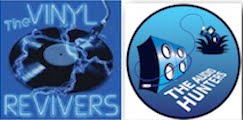

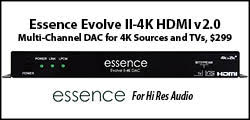

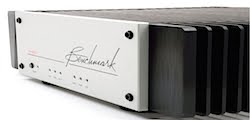


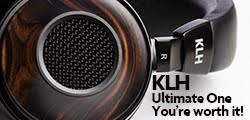
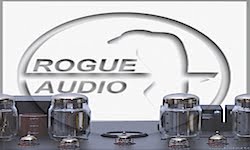

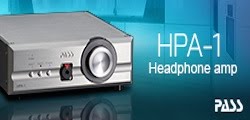


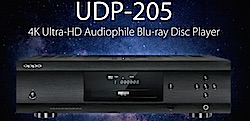
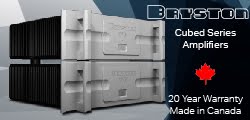

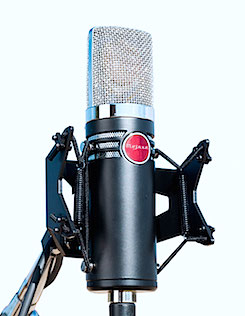
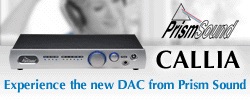
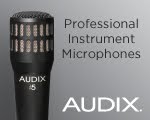
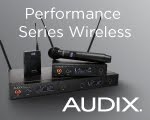
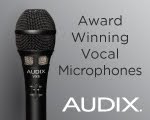
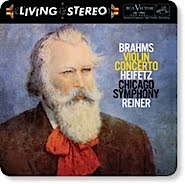






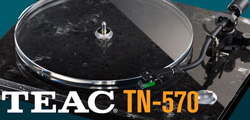





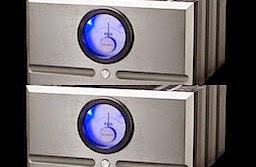
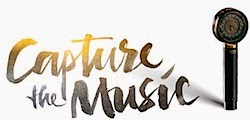


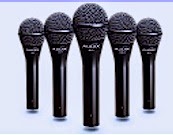


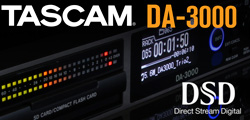

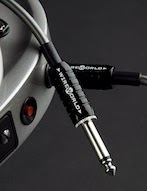

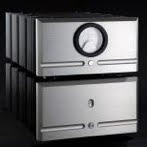
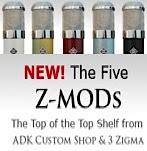








No comments:
Post a Comment